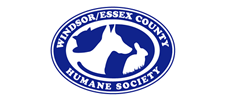Session 1: VAW shelters and companion animals – A call for transforming social work education and practice to reflect trans-species social justice
Sub-theme
Practice
Keywords
Violence against women (VAW), Critical Animal Studies, Trans-species social justice, Companion animals, social work practice, social work education
Start Date
11-10-2018 9:45 AM
End Date
11-10-2018 10:45 AM
Abstract
Social justice is social work’s core value. One of the serious social injustices today is violence against women (VAW). Ensuring women’s safety and minimizing their risks are paramount tasks for addressing this injustice based on dominance and oppression of women. The evidence for links between abuse of women and abuse of animals is now well-documented (Ascione and Arkow 1999; Merz-Perez 2004; Ascione 1998; Becker and French 2004; Flynn 2000a; Faver and Strand 2003; Newberry 2017; Simmons and Lehmann 2007; Volant et al 2008). Women facing domestic violence are often reluctant to utilize women’s shelters when they must leave their companion animals behind, as they consider them as members of their trans-species families. Recent studies in Canada, showed that workers in VAW sector are well-aware of this connection (Stevenson et al.,2018; Wuerch et al., 2017). Existing studies make strong policy recommendations to include companion animals in safety planning by incorporating them in risk assessments and to build support for clients with companion animals (Krienert et al. 2012; Stevenson 2018; Wuerch et al.). Studies have warned that failing to address the important bond between women and non-human animals misses a critical aspect of help-seeking behaviour of women in violent situations (e.g. Strand & Faver, 2005).
No study has examined to what extent women’s shelters accommodate companion animals in Ontario to meet changes in family relations and human-animal relations from a Critical Animal Studies perspective to examine social work education and practice. The paper presentation is based on results of a survey with women’s shelter organizations in Ontario to identify the current resources for women with companion animals and interviews with service providers in the VAW sector in Ontario.
As findings, we identified seven models to support women at risk with companion animals and interviews showed that availability of care and safety for companion animals has several positive outcomes, not limited to women, but also their children, the agency, staff and the community, as well as for the animals themselves. The paper argues several important implications for social work education and practice to be more effective in achieving justice for women. First, moving away from anthropocentric education model; second, integrating an understanding of trans-species families and familial relations; third, addressing trans-species social justice, social justice beyond humans. The paper also argues that social work education needs to deepen the students’ understanding of how their social locations, which are not limited to relations to human others, but animal others, impact their social work practice to achieve social justice for all.
Session 1: VAW shelters and companion animals – A call for transforming social work education and practice to reflect trans-species social justice
Social justice is social work’s core value. One of the serious social injustices today is violence against women (VAW). Ensuring women’s safety and minimizing their risks are paramount tasks for addressing this injustice based on dominance and oppression of women. The evidence for links between abuse of women and abuse of animals is now well-documented (Ascione and Arkow 1999; Merz-Perez 2004; Ascione 1998; Becker and French 2004; Flynn 2000a; Faver and Strand 2003; Newberry 2017; Simmons and Lehmann 2007; Volant et al 2008). Women facing domestic violence are often reluctant to utilize women’s shelters when they must leave their companion animals behind, as they consider them as members of their trans-species families. Recent studies in Canada, showed that workers in VAW sector are well-aware of this connection (Stevenson et al.,2018; Wuerch et al., 2017). Existing studies make strong policy recommendations to include companion animals in safety planning by incorporating them in risk assessments and to build support for clients with companion animals (Krienert et al. 2012; Stevenson 2018; Wuerch et al.). Studies have warned that failing to address the important bond between women and non-human animals misses a critical aspect of help-seeking behaviour of women in violent situations (e.g. Strand & Faver, 2005).
No study has examined to what extent women’s shelters accommodate companion animals in Ontario to meet changes in family relations and human-animal relations from a Critical Animal Studies perspective to examine social work education and practice. The paper presentation is based on results of a survey with women’s shelter organizations in Ontario to identify the current resources for women with companion animals and interviews with service providers in the VAW sector in Ontario.
As findings, we identified seven models to support women at risk with companion animals and interviews showed that availability of care and safety for companion animals has several positive outcomes, not limited to women, but also their children, the agency, staff and the community, as well as for the animals themselves. The paper argues several important implications for social work education and practice to be more effective in achieving justice for women. First, moving away from anthropocentric education model; second, integrating an understanding of trans-species families and familial relations; third, addressing trans-species social justice, social justice beyond humans. The paper also argues that social work education needs to deepen the students’ understanding of how their social locations, which are not limited to relations to human others, but animal others, impact their social work practice to achieve social justice for all.





